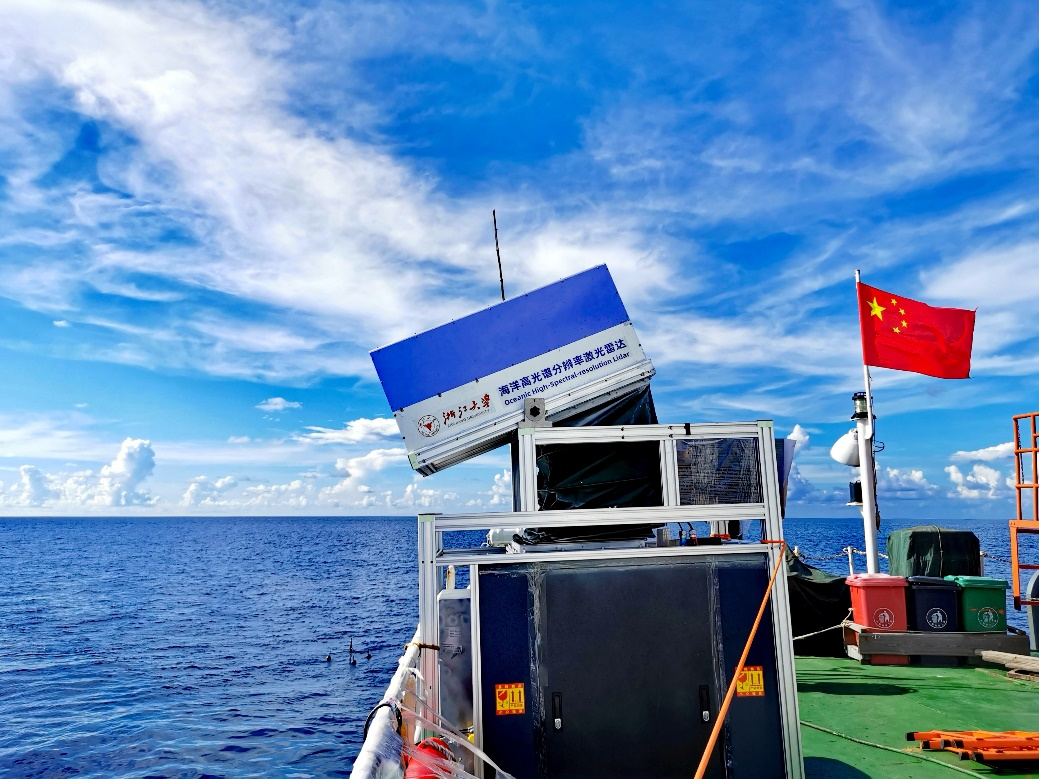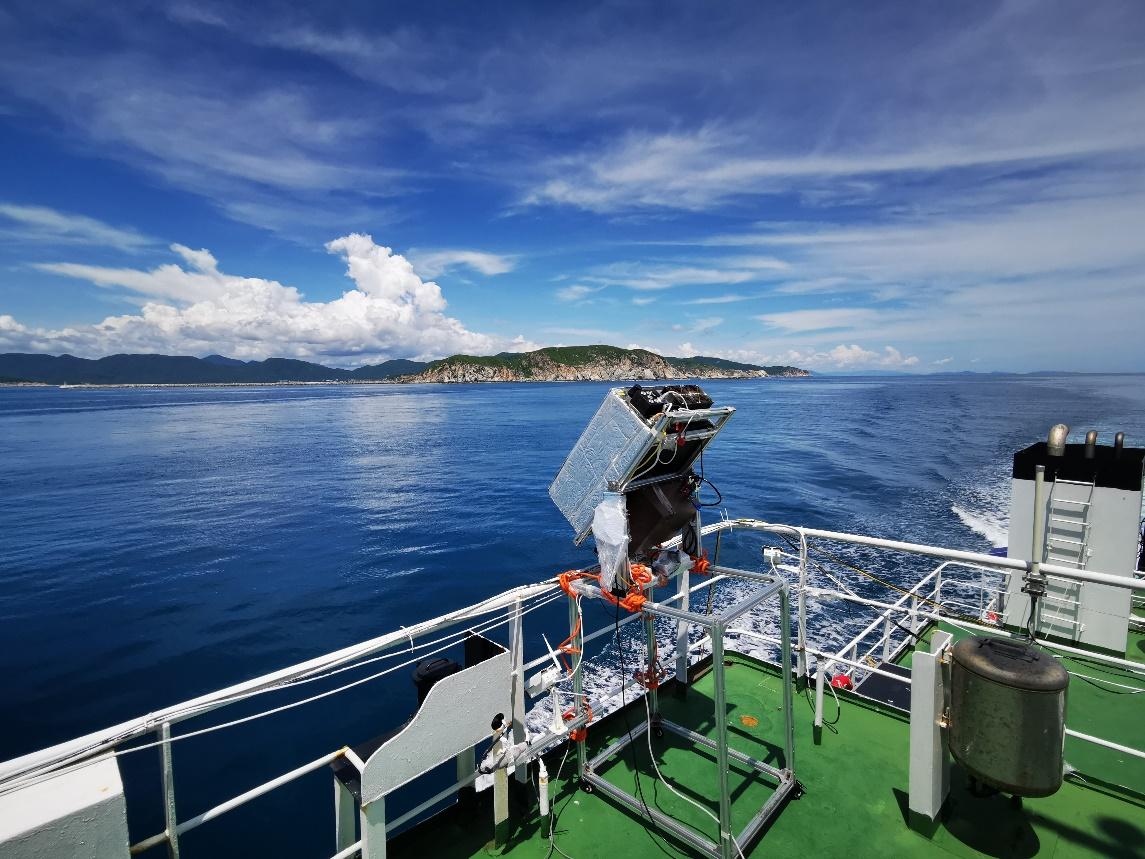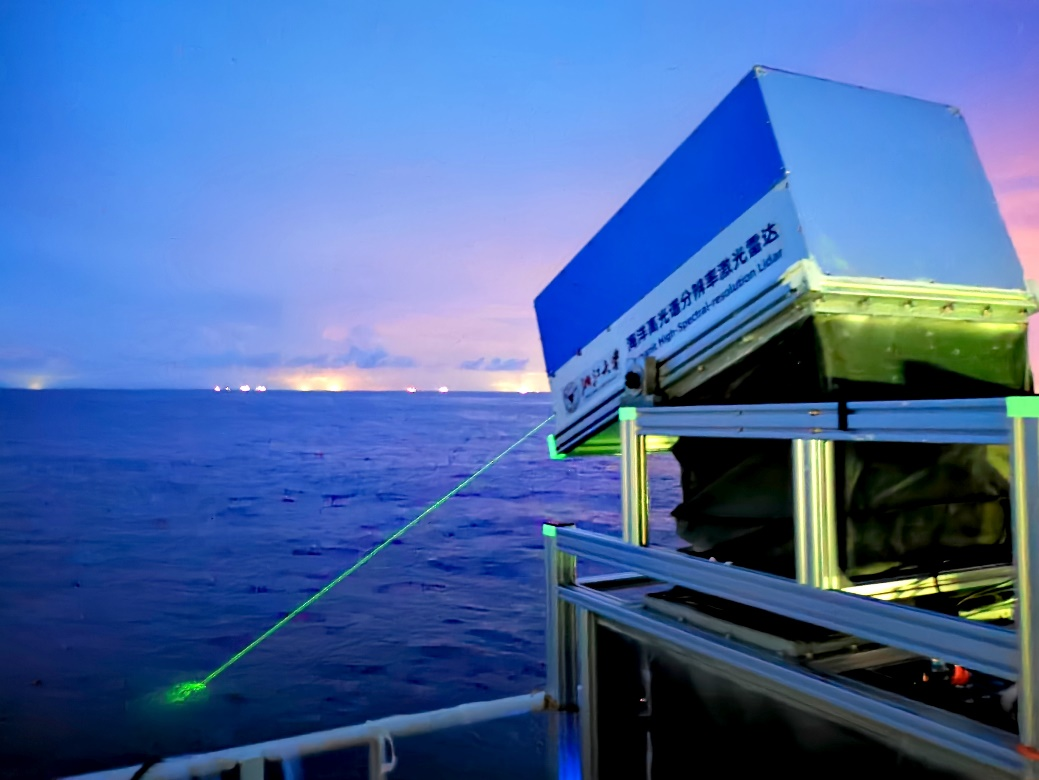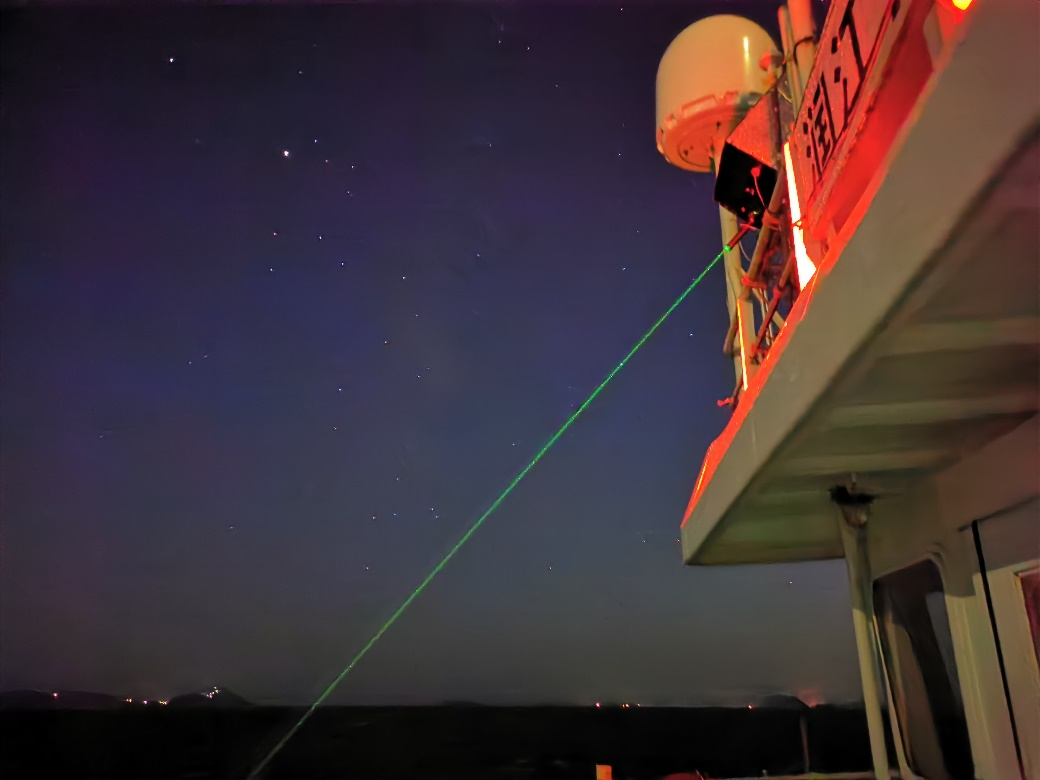The research team led by Professor LIU Dong and Professor LIU Chong from the College of Optical Science and Engineering (COSE) of Zhejiang University (ZJU), International Research Center for Advanced Photonics, successfully developed the China's first oceanic high-spectral-resolution lidar (HSRL). In September 2020, the newly constructed lidar system participated in a field campaign from the East China Sea to the South China Sea, organized by the Second Institute of Oceanology, Ministry of Natural Resources. A self-developed oceanic elastic lidar system also participated in the Campaign. Dr. ZHOU Yudi from ZJU's Ningbo Institute and Optical Engineering students XU Peituo and CHEN Yang from COSE took part in the experiment.

Figure 1 ZJU oceanic high-spectral-resolution lidar

Figure 2 ZJU oceanic elastic lidar
This field campaign's primary purpose is to test the reliability of the self-developed HSRL and obtain the optical properties of the upper layer in China's coastal ocean. During the experiment, ZJU's oceanic lidar and in-situ instruments were used to measure the vertical profiles of seawater inherent optical properties (IOPs) and apparent optical properties (AOPs). The research aims to validate the ability of active optical remote sensing method for observing ocean. The campaign obtained about half-month voyage data and many fixed station data. The results have shown that the HSRL system is reliable and relatively advanced.

Figure 3 The oceanic high-spectral-resolution lidar operated in the nighttime

Figure 4 The oceanic elastic lidar participated in the field campaign
The research interests of the team led by Professor LIU Dong and Professor LIU Chong is lidar for environment remote sensing, focusing on ground-based, ship-based, and space-borne lidar for atmospheric aerosols and greenhouse gases, as well as oceanic detection. The team aims to solve scientific problems in the environment, climate, meteorology, and other related fields. The team works with major international partners include Physics Instrumentation Center of General Physics Institute, Russia, Institute of Physics, National Academy of Sciences of Belarus, Belarus, Environment and Climate Change Canada, Canada, etc.






